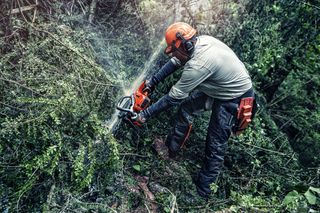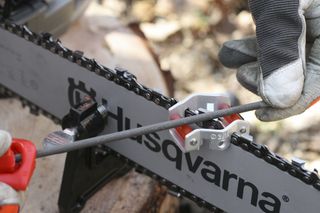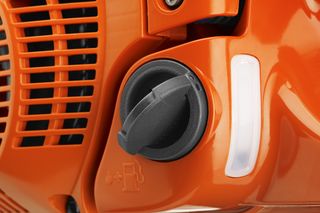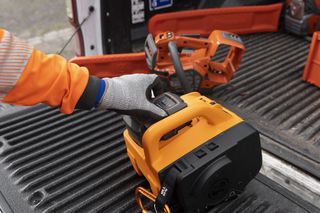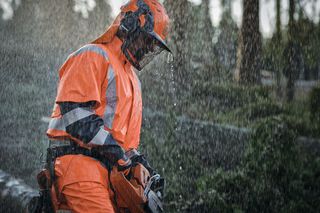
Chainsaw work tasks with risk of kickback
Kickback can occur during most work procedures if the chainsaw is not handled carefully. This is why it is essential for you to learn and use correct saw technique. Always use a chainsaw with a working chain brake. Thumbs and fingers must be completely wrapped around the handles. Always keep your left thumb under the front handle when you use the saw to catch the saw in case of kickback.
Beware of the kickback zone!
Always use a chainsaw with a working chain brake. The kickback zone is the upper part of the nose of the guide bar. Applying the guide bar here has a kickback risk. Never saw using the part of the guide bar that poses a significant risk for kickback! In the event of kickback, the chain will grip the timber with the kickback zone first. The saw and blade are thrown backwards and upwards by the force of the rotating chain.
Kickback risk when limbing
Observe caution when limbing. The nose of the guide bar can hit underlying logs, stumps, hidden branches and ends of logs, causing kickback.
Kickback risk when felling and crosscutting
Preparation ahead of felling
Before felling, there is a risk of kickback when pruning and when you cut down shrubs and small trees that are in the way when felling. Cut with a pulling chain when pruning. Never saw above shoulder height.
Felling and crosscutting
When felling and crosscutting, you may want to bore the guide bar into the trunk. There is a risk of kickback if you saw carelessly with the guide bar’s kickback zone directly facing the trunk. You can avoid the greatest risk of kickback simply by never putting the nose of the guide bar directly against the wood. Bore in a safe way as explained in the section Cutting with bore.
